
The Royal Naval Reserve (RNR) is one of the two volunteer reserve forces of the Royal Navy in the United Kingdom. Together with the Royal Marines Reserve, they form the Maritime Reserve. The present RNR was formed by merging the original Royal Naval Reserve, created in 1859, and the Royal Naval Volunteer Reserve (RNVR), created in 1903. The Royal Naval Reserve has seen action in World War I, World War II, the Iraq War, and War in Afghanistan.
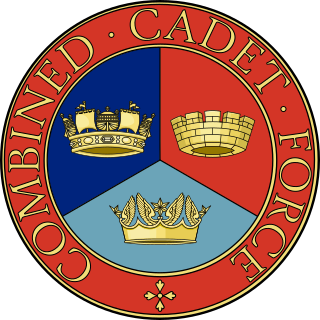
The Combined Cadet Force (CCF) is a youth organisation in the United Kingdom, sponsored by the Ministry of Defence (MOD), which operates in schools, sub divided into Royal Navy, Royal Marines, Army and Royal Air Force sections. Its aim is to "provide a disciplined organisation in a school so that pupils may develop powers of leadership by means of training to promote the qualities of responsibility, self reliance, resourcefulness, endurance and perseverance".

The Sea Cadet Corps is a national youth charity. It is present in England, Scotland, Wales, Northern Ireland, Malta and Bermuda. Cadets follow an ethos, training plan and rank structure similar to that of the Royal Navy, and are recognised by the UK Ministry of Defence.
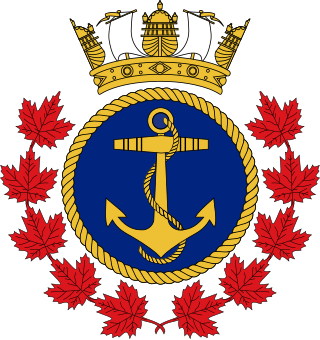
The Royal Canadian Sea Cadets is a Canadian national youth program sponsored by the Canadian Armed Forces and the civilian Navy League of Canada. Administered by the Canadian Forces, the program is funded through the Department of National Defence, with the civilian partner providing support in the local community. Cadets are not members of the Canadian Armed Forces.

The North America and West Indies Station was a formation or command of the United Kingdom's Royal Navy stationed in North American waters from 1745 to 1956, with main bases at the Imperial fortresses of Bermuda and Halifax, Nova Scotia. The North American Station was separate from the Jamaica Station until 1830 when the two combined to form the North America and West Indies Station. It was briefly abolished in 1907 before being restored in 1915. It was renamed the America and West Indies Station in 1926. It was commanded by Commanders-in-Chief whose titles changed with the changing of the formation's name, eventually by the Commander-in-Chief, America and West Indies Station.

The Royal Bermuda Regiment (RBR) is the home defence unit of the British Overseas Territory of Bermuda. It is a single territorial infantry battalion that was formed on the amalgamation in 1965 of two originally voluntary units, the mostly black Bermuda Militia Artillery (BMA) and the almost entirely white Bermuda Rifles, and the only remaining component of the Bermuda Garrison since the 1957 withdrawal of regular units and detachments from Bermuda.
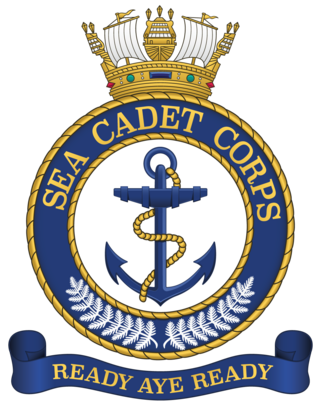
The NewZealandSea Cadet Corps is one of the three corps in the New Zealand Cadet Forces, the other two being the Air Training Corps, and New Zealand Cadet Corps. It is a military-style training organisation for young people between the ages of 13 and 21. Activities include sailing, and boat work, ropework shooting and drill, amongst other activities, many of which involving the other branches of the NZCF. Cadets need to pass an annual swimming test to undertake water-based activities.

HMS York was the lead ship of her class of two heavy cruisers built for the Royal Navy in the late 1920s. She mostly served on the North America and West Indies Station before World War II. Early in the war the ship escorted convoys in the Atlantic and participated in the Norwegian Campaign in 1940. York was transferred to the Mediterranean theatre in late 1940 where she escorted convoys and the larger ships of the Mediterranean Fleet. She was wrecked in an attack by Italian explosive motorboats of the 10th Flotilla MAS at Suda Bay, Crete, in March 1941. The ship's wreck was salvaged in 1952 and subsequently scrapped.

HMD Bermuda was the principal base of the Royal Navy in the Western Atlantic between American independence and the Cold War. The Imperial fortress colony of Bermuda had occupied a useful position astride the homeward leg taken by many European vessels from the New World since before its settlement by England in 1609. French privateers may have used the islands as a staging place for operations against Spanish galleons in the 16th century. Bermudian privateers certainly played a role in many English and British wars following settlement, with its utility as a base for his privateers leading to the Earl of Warwick, the namesake of Warwick Parish, becoming the most important investor of the Somers Isles Company. Despite this, it was not until the loss of bases on most of the North American Atlantic seaboard threatened Britain's supremacy in the Western Atlantic that the island assumed great importance as a naval base. In 1818 the Royal Naval Dockyard, Bermuda officially replaced the Royal Naval Dockyard, Halifax, as the British headquarters for the North America Station (which would become the North America and West Indies Station after absorbing the Jamaica Station in 1830.
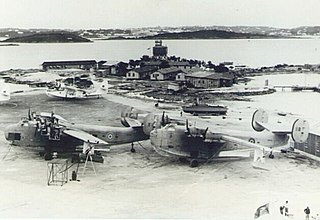
The Royal Air Force (RAF) operated from two locations in the Imperial fortress colony of Bermuda during the Second World War. Bermuda's location had made it an important naval station since US independence, and, with the advent of the aeroplane, had made it as important to trans-Atlantic aviation in the decades before the Jet Age. The limited, hilly land mass had prevented the construction of an airfield, but, with most large airliners in the 1930s being flying boats, this was not initially a limitation.

The Bermuda Volunteer Rifle Corps (BVRC) was created in 1894 as a reserve for the Regular Army infantry component of the Bermuda Garrison. Renamed the Bermuda Rifles in 1951, it was amalgamated into the Bermuda Regiment in 1965.

These are the official Royal Navy Officer ranks ordered by rank. These ranks are part of the NATO/United Kingdom ranks, including modern and past. Past insignia is in italic.

The Scout Association's Sea Scouts are a branch of the association dedicated to boating and water-based activities such as sailing, canoeing, motorboating and water navigation. The association approved a special uniform for Sea Scouts in 1910 and, in 1912, the association formally adopted use of the name "Sea Scouts". Specialist Sea Scout troops have existed ever since. They are usually based by the side of water, either the sea, lake, river or canal.
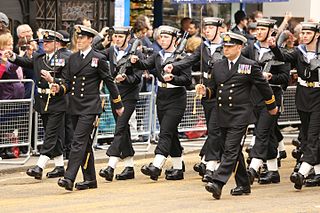
The uniforms of the Royal Navy have evolved gradually since the first uniform regulations for officers were issued in 1748. The predominant colours of Royal Navy uniforms are navy blue and white. Since reforms in 1997 male and female ratings have worn the same ceremonial uniform.
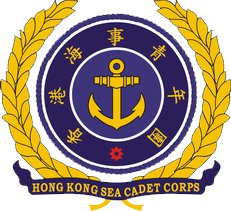
Hong Kong Sea Cadet Corps is a youth organization based in Hong Kong and formed in 1968 by former Royal Naval Reserve officers by the creation of Hong Kong Law

Admiral Sir Irvine Gordon Glennie KCB was a Royal Navy officer who went on to be Commander-in-Chief, America and West Indies Station.
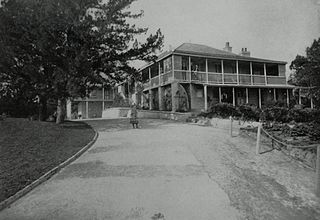
Admiralty House, Bermuda, was the official residence and offices for the senior officer of the Royal Navy in the Imperial fortress colony of Bermuda, originally the Commander-in-Chief of the North America and West Indies Station.

The Bermuda Cadet Corps was a youth organisation in the Imperial fortress colony of Bermuda, sponsored originally by the War Office and the British Army. Modelled on the Cadet Corps in England, now organised as the Army Cadet Force and the Combined Cadet Force, it was organised separately under Acts of the Parliament of Bermuda. It was one of three Cadet Corps that historically operated in the British territory, with the others being the Bermuda Sea Cadet Corps and the Air Training Corps, of which only the Bermuda Sea Cadet Corps remains. After more than a century of existence, the Bermuda Cadet Corps was disbanded in 2013 and replaced by the resurrected Junior Leaders programme of the Royal Bermuda Regiment.

Imperial fortress was the designation given in the British Empire to four colonies that were located in strategic positions from each of which Royal Navy squadrons could control the surrounding regions and, between them, much of the planet.

RNAS Bermuda was a Royal Naval Air Station in the Royal Naval Dockyard on Ireland Island until 1939, then Boaz Island, Bermuda. Bermuda became the primary base for the North America and West Indies Station of the Royal Navy in the North-West Atlantic following American independence. It was the location of a dockyard, an Admiralty House, and the base of a naval squadron.














































